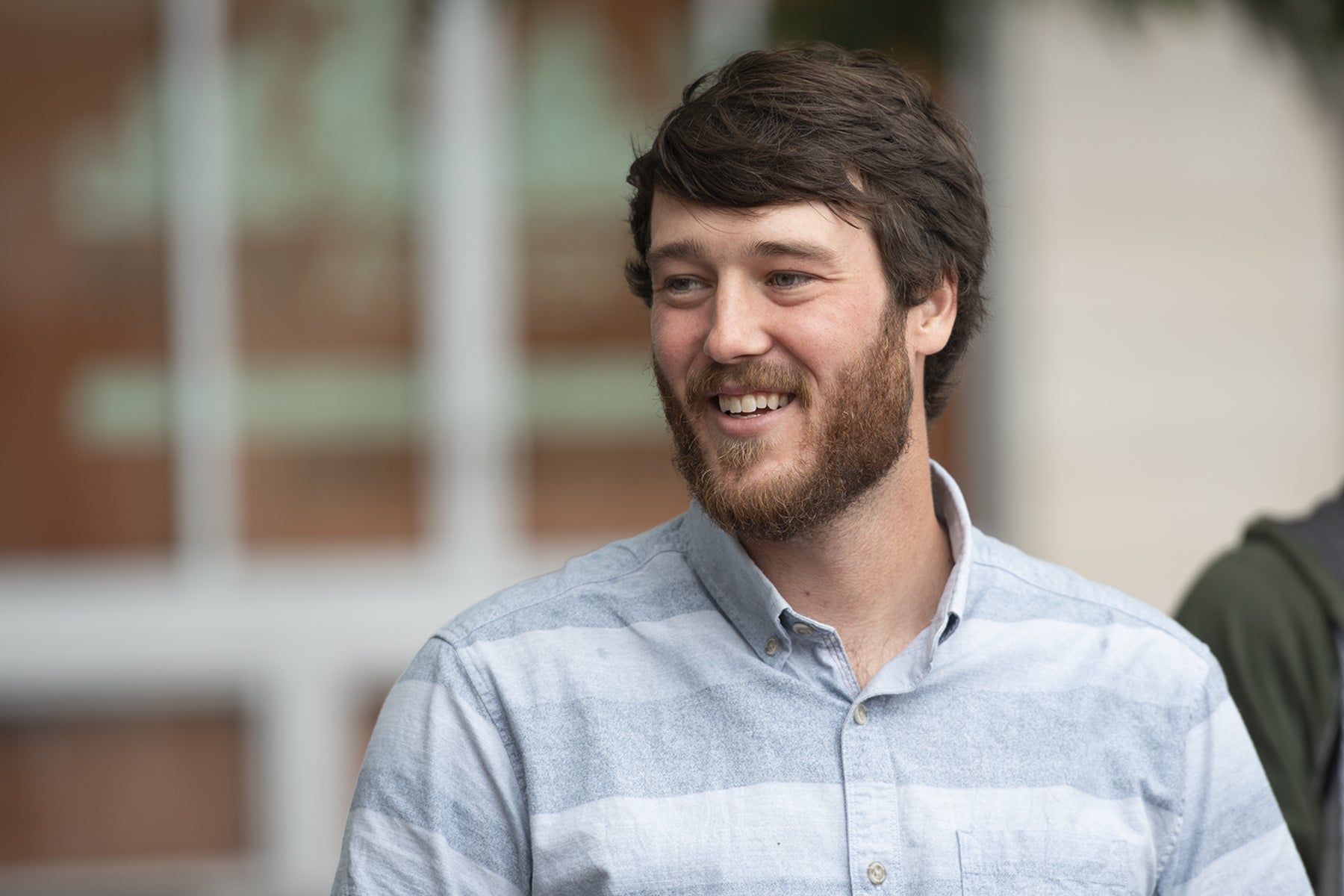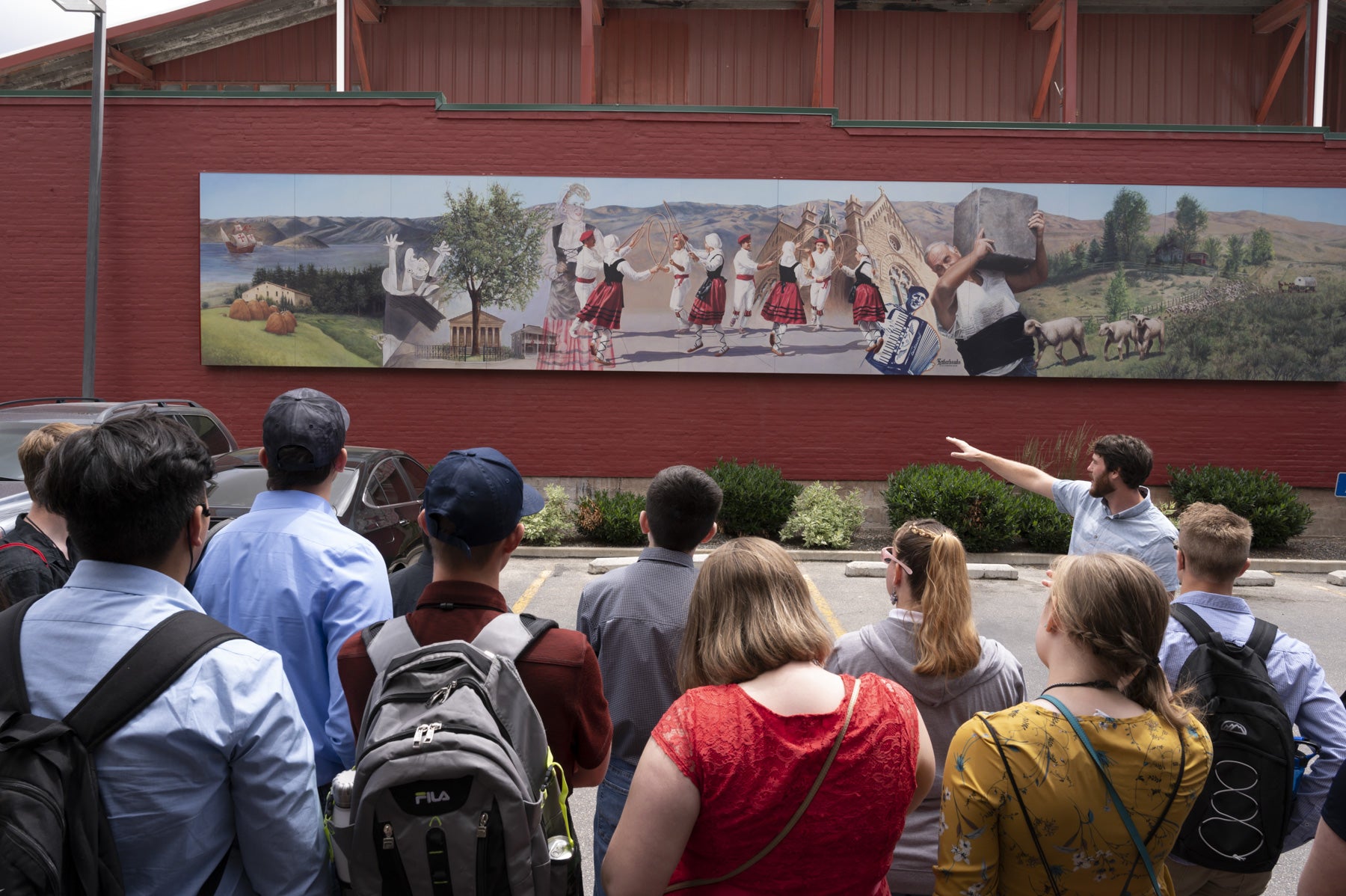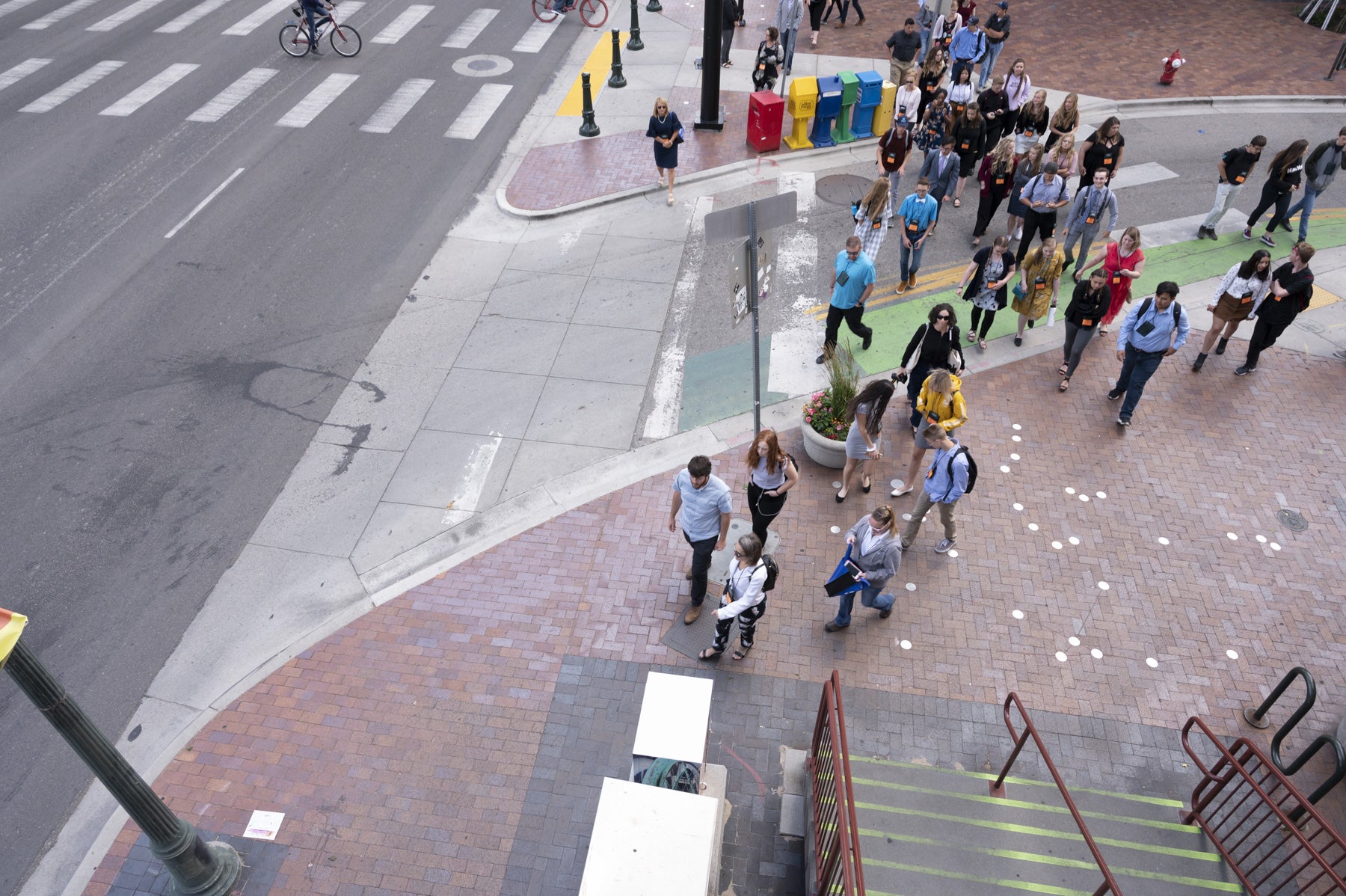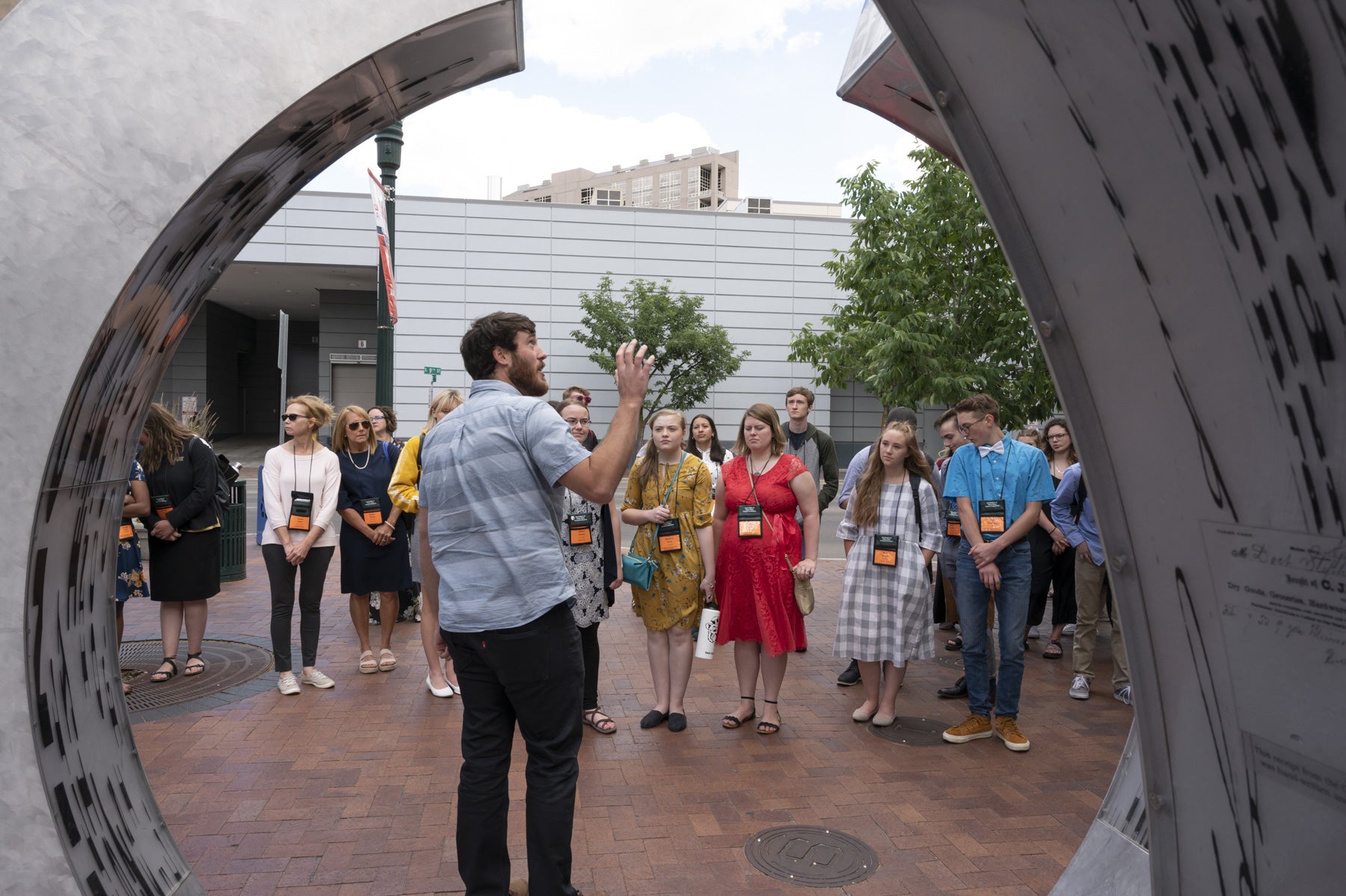
As much as every artist needs an audience, they also need patrons – people who believe in their work enough to champion it, cultivate it, ensure that it can take its place in the cultural dialogue of a society. The city of Boise has become a patron for many of the artists who call it home, thanks to the efforts of the city’s Department of Arts and History and people like Boise State alumnus Karl LeClair, the city’s public art program manager.
“Public art not only supports the artistic community and makes art a viable career for artists,” LeClair said, “it beautifies the places and spaces we see every day. It cultivates a sense of identity and place within a community.”
In 2001, the Boise City Council passed an ordinance reserving 1.4 percent of all capital project funds for public art in city-owned spaces. Since then, the Percent-for-Art program has produced the unique traffic box wraps seen throughout town, murals, performances, sculptures, mosaics, installations and more.

LeClair facilitates projects like these. The New England native graduated from Boise State in 2013 with a bachelor’s degree in arts education and emphases in arts history and printmaking. Upon graduation, he was hired by the city to grow its public art program outside of Boise’s downtown core. Art lovers can now view public art everywhere from the Boise Airport and local library branches to parks, streetscapes and even the Foothills Learning Center.
He also brings artists together with Boise’s unique neighborhoods to help them visualize and express their identities in new ways. Neighborhood art projects in the Depot Bench, Vista Avenue and West End neighborhoods will be installed in the next six months under LeClair’s watch.
“I listen and respond to the needs of community members, project stakeholders and the community at large,” he said. “It’s a collaborative process, but neighborhoods are the strongest voice within the selection panel; they work with the artists during the design phase to help present their identity of the neighborhood.”
He noted that the unique structure of Boise’s Department of Arts and History – which unites both disciplines, unlike most municipalities that silo archivists, historians and public arts employees – allows the city to help artists capture the history and soul of the city.

“We haven’t found a department in any municipality across the country that follows the same model we do,” LeClair said. “The benefit is that however we’re developing a project within the city, we can identify the historic significance of that place and provide all of that information to the artist. We are able to add in deeper resources, for example oral histories or narratives from prominent neighborhood residents.”
The city-led restoration of Idaho artist James Castle’s house located in the Collister neighborhood, is one example. “That was and remains an extremely rewarding part of my job – giving tours, sharing his work with the public, being part of the restoration of his house and work. I enjoy working with artists and being their voice within the city, and advocating for the arts at this level.”
His favorite public art piece? He has many. One is artist Dwaine Carver’s “Historic Site: Boise Chinatown” – three stereoscopic viewers near the Grove Plaza in downtown Boise with historic photos that transport viewers to that exact location circa 1900, when the city’s now-lost Chinatown was thriving.

The viewers look like every-day utilitarian city infrastructure, LeClair explained. “The subtlety, the element of surprise, and reinserting the lost narrative of the people and the development of the city into a contemporary context, that’s what makes it so engaging.”
LeClair often includes the scenic viewers in the public art walking tours he hosts. Anyone is welcome to meet in front of City Hall on the third Saturday of every month for a two-hour tour of downtown public art.
“After every tour, at least one person tells me ‘I’ve been passing that piece for years and never noticed it,'” LeClair said. “And now they have a newfound appreciation for the work.”
